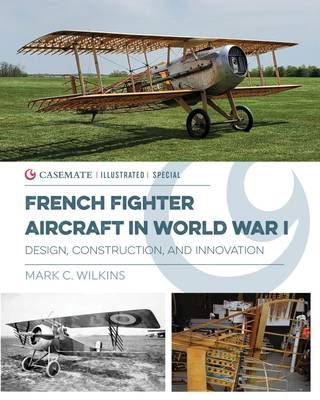
- Afhalen na 1 uur in een winkel met voorraad
- Gratis thuislevering in België vanaf € 30
- Ruim aanbod met 7 miljoen producten
- Afhalen na 1 uur in een winkel met voorraad
- Gratis thuislevering in België vanaf € 30
- Ruim aanbod met 7 miljoen producten
Zoeken
€ 55,95
+ 111 punten
Omschrijving
In the early 20th century, France led aviation innovation with groundbreaking aircraft like the Morane Saulnier, Nieuport, and Spad fighters, shaping World War I aerial combat.
During the first decade of the 20th century, France led the way in aircraft design and achievements. After the outbreak of World War I, France produced trailblazing designs early--the Morane Saulnier monoplanes, Nieuport fighters, and then the Spads--clearly leading the way in terms of trends in aviation. Although the Fokker Eindeckers were the first "point and shoot" aircraft, the Nieuport 11, while lacking interrupter gear, was the first maneuverable and cleanly designed fighter that featured ailerons and responsive controls on all axes. The Nieuports were so successful that Germany co-opted the sesquiplane with their Albatros line of fighters. The Spad VII was the first Allied fighter to employ an inline engine, and by extension influenced the design path of the S.E.5a and the Dolphin.
French construction methodology was eclectic--the Nieuports were straightforward in their construction, as were the British, but the Spad was a labor-intensive yet rugged and finely built aircraft--requiring many different skill sets to produce. Moreover, Spads were built under license by many companies in France as well as in Britain. Finally, French engines were in demand for not only their own aircraft, but for much of the British aviation industry as well. This fully illustrated book will complement the author's titles on the German and French fighter aircraft.
During the first decade of the 20th century, France led the way in aircraft design and achievements. After the outbreak of World War I, France produced trailblazing designs early--the Morane Saulnier monoplanes, Nieuport fighters, and then the Spads--clearly leading the way in terms of trends in aviation. Although the Fokker Eindeckers were the first "point and shoot" aircraft, the Nieuport 11, while lacking interrupter gear, was the first maneuverable and cleanly designed fighter that featured ailerons and responsive controls on all axes. The Nieuports were so successful that Germany co-opted the sesquiplane with their Albatros line of fighters. The Spad VII was the first Allied fighter to employ an inline engine, and by extension influenced the design path of the S.E.5a and the Dolphin.
French construction methodology was eclectic--the Nieuports were straightforward in their construction, as were the British, but the Spad was a labor-intensive yet rugged and finely built aircraft--requiring many different skill sets to produce. Moreover, Spads were built under license by many companies in France as well as in Britain. Finally, French engines were in demand for not only their own aircraft, but for much of the British aviation industry as well. This fully illustrated book will complement the author's titles on the German and French fighter aircraft.
Specificaties
Betrokkenen
- Auteur(s):
- Uitgeverij:
Inhoud
- Aantal bladzijden:
- 192
- Taal:
- Engels
- Reeks:
Eigenschappen
- Productcode (EAN):
- 9781636241449
- Verschijningsdatum:
- 30/06/2025
- Uitvoering:
- Hardcover
- Formaat:
- Genaaid
- Afmetingen:
- 203 mm x 254 mm

Alleen bij Standaard Boekhandel
+ 111 punten op je klantenkaart van Standaard Boekhandel
Beoordelingen
We publiceren alleen reviews die voldoen aan de voorwaarden voor reviews. Bekijk onze voorwaarden voor reviews.











